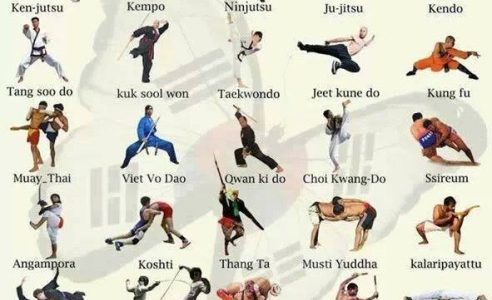A Relative Research Of Traditional Martial Arts And Modern Fight Sports: Highlighting The Necessary Distinctions
A Relative Research Of Traditional Martial Arts And Modern Fight Sports: Highlighting The Necessary Distinctions
Blog Article
Published By-Bright Haagensen
When you consider martial arts, do you lean more toward the standard practices or the contemporary combat sports? Each course provides distinct advantages and experiences, shaped by their approaches and training methods. Typical martial arts highlight individual growth and technique, while modern-day battle sporting activities concentrate on competition and performance. Understanding these distinctions can lead you in choosing the right approach for your journey. But just how do these distinctions manifest in training and ideology?
The Viewpoint and History Behind Standard Martial arts
While many individuals associate martial arts with physical battle, the ideology and history behind conventional martial arts run much deeper. You'll locate that these techniques highlight individual development, technique, and regard.
Stemming from ancient practices, standard martial arts were usually developed for Self-Defense and spiritual development. They personify concepts such as equilibrium, consistency, and self-discipline, directing professionals beyond mere battling abilities.
As martial arts gym train, you'll not just find out strategies but also gain insights into the society and values that formed these arts. The routines and traditions, typically given through generations, foster a feeling of community and belonging.
The Competitive Nature of Modern Combat Sports
Modern fight sports have actually transformed the landscape of martial arts right into an extremely competitive arena, where professional athletes face off in a test of skill, approach, and endurance.
You'll discover that competitors are typically arranged with stringent guidelines and policies, making certain fair play and security. These occasions draw in huge audiences, fueling the exhilaration and strength of matchups.
Athletes train carefully, not just for physical prowess but also for psychological toughness, understanding that every detail counts in the ring. The adrenaline thrill during competitions is apparent, as fighters push their limitations to claim success.
Fans value the athleticism and creativity entailed, making modern battle sports a thrilling phenomenon that continues to advance and captivate enthusiasts worldwide.
Training Approaches and Techniques: A Comparative Evaluation
The affordable environment of modern-day combat sporting activities demands ingenious training techniques that differ significantly from typical martial arts.
In aikido martial art , you'll concentrate on particular methods, sparring, and conditioning, typically utilizing drills that simulate real battle scenarios. You'll see an emphasis on measurable performance and constant competition to analyze your abilities.
In contrast, typical martial arts prioritize types, katas, and thoughtful mentors, usually highlighting discipline and respect over competition.
Training is typically much less extreme and may involve recurring technique as opposed to real-time sparring.
While both approaches build ability and physical fitness, modern battle sporting activities supply a more vibrant and versatile training atmosphere, preparing you for prompt challenges in the ring or cage.
Pick the path that straightens with your goals and rate of interests.
Verdict
In selecting between typical martial arts and contemporary battle sporting activities, it truly comes down to what you value most. If you're seeking personal development, discipline, and a sense of community, typical arts may be your best fit. However if you prosper on competitors and real-time obstacles, modern combat sporting activities could be the means to go. Ultimately, both paths provide special advantages, so it's all about aligning your training with your personal objectives and rate of interests.
